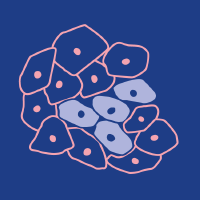
Background: The coronavirus disease 2019 (COVID-19) pandemic affected and overwhelmed many health care systems around the world at an unprecedented speed and magnitude with devastating effects. In developing nations, smaller hospitals were unprepared to face this outbreak nor had strategies in place to do so at the beginning. Here, we describe the preparation in an anesthetic department using simulation-based training over 2 weeks, as the number of cases rose rapidly. METHODS: Three areas of priority were identified as follows: staff safety, patient movement, and possible clinical scenarios based on simulation principles in health care education. Staff was rostered and rotated through stations for rapid-cycle deliberate practice to learn donning and doffing of personal protective equipment (PPE) and powered air-purifying respirator (PAPR). For difficult airway management, Peyton's 4 steps for skills training and Harden's Three Circle model formed the structure in teaching the core skills. Several clinical scenarios used system probing to elicit inadequacies followed by formal debriefing to facilitate reflection. Finally, evaluation was both immediate and delayed with an online survey after 1 month to examine 4 levels of reaction, learning, behavior, and impact based on the Kirkpatrick Model. Frequency and thematic analysis were then conducted on the quantitative and qualitative data, respectively. RESULTS: A total of 15 of 16 (93%) consultants, 16 (100%) specialists, and 81 (100%) medical officers in the department completed training within 2 consecutive weeks. Reaction and part of the learning were relayed immediately to trainers during training. In total, 42 (39%) trained staff responded to the survey. All were satisfied and agreed on the relevance of training. A total of 41 respondents (98%; 95% confidence interval [CI], 87-99) answered 16 of 20 questions correctly on identifying aerosol-generating procedures (AGP), indications for PPE, planning and preparation for airway management to achieve adequate learning. About 43% (95% CI, 27-59) and 52% (95% CI, 36-68) recalled donning and doffing steps correctly. A total of 92 responses from 33 respondents were analyzed in the thematic analysis. All respondents reported at least 1 behavioral change in intended outcomes for hand hygiene practice (20%), appropriate use of PPE (27%), and airway management (10%). The emerging outcomes were vig ilance, physical distancing, planning, and team communication. Finally, the impact of training led to the establishment of institutional guidelines followed by all personnel. CONCLUSIONS: Simulation-based training was a useful preparation tool for small institutions with limited time, resources, and manpower in developing nations. These recommendations represent the training experience to address issues of "when" and "how" to initiate urgent "medical education" during an outbreak.










